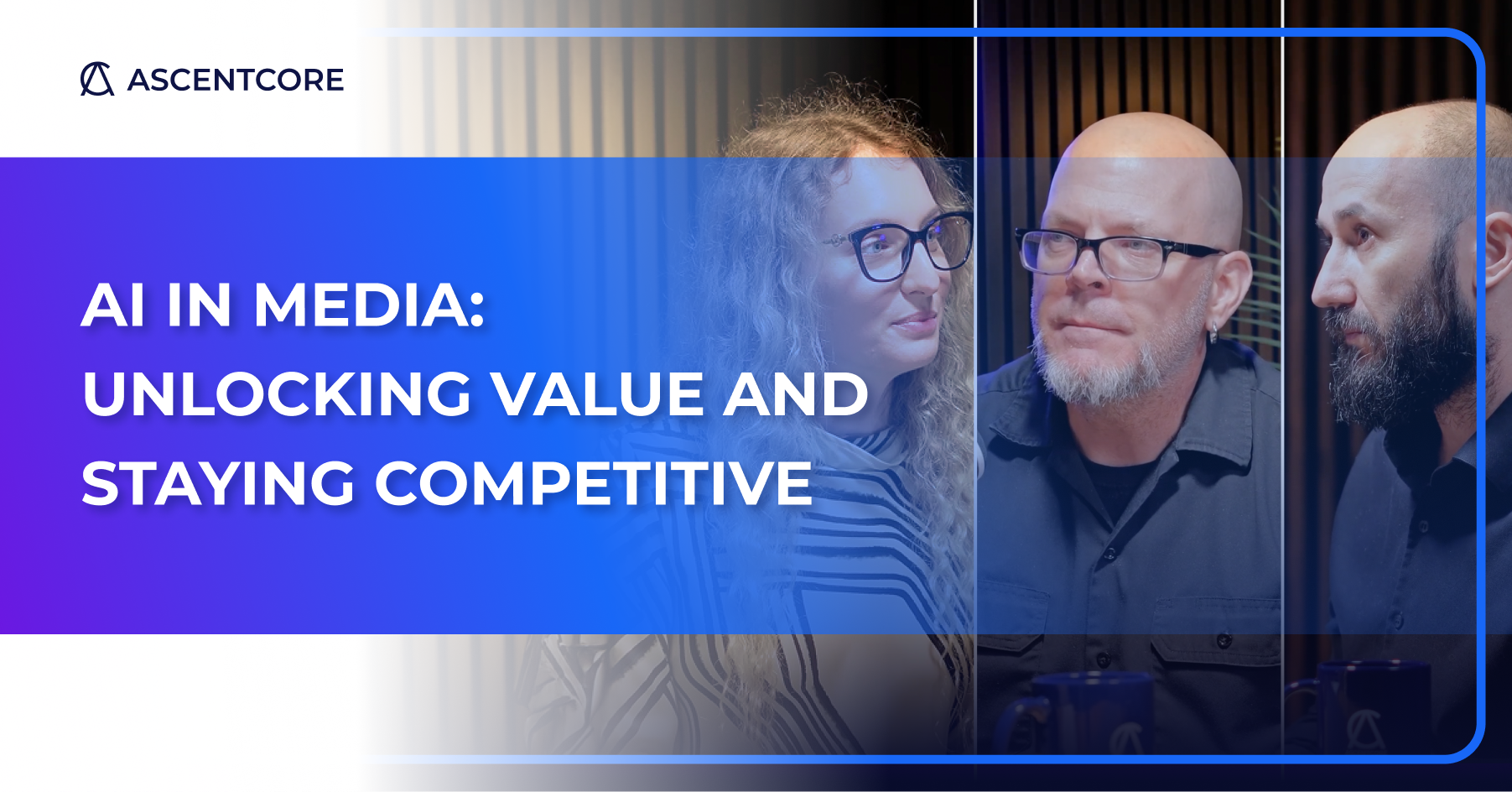In the fast-paced world of media, staying ahead of the curve is not just an advantage, it’s a necessity. Artificial intelligence (AI) has moved beyond being a trendy buzzword to become a transformative force reshaping the industry. Media companies that fail to embrace AI risk losing ground to competitors and missing out on significant opportunities for growth and innovation.
In a recent podcast, AI & Media: A C-Level Playbook, Jonathan Rivers, a media technology executive, and Cornel Stefanache, CTO at AscentCore, shared compelling insights into how AI is driving value and competitiveness in media. Their discussion revealed three key business drivers for AI adoption: monetizing archives, optimizing distribution, and streamlining internal processes.
Monetizing Archives with AI
Media companies possess vast archives, decades’ worth of articles, videos, and images, that Jonathan describes as “gold mines of structured data.” These treasure troves hold untapped potential, and AI is the key to unlocking it.
“Using AI to unlock the power of them can come in a couple of different forms,” Rivers explains. “One, the idea of information surfaces where journalism companies have reporting that transcends space and time and going back to those archives and sort of re-monetizing.”
Unlike simple text searches, which fall short when navigating 95 years of magazine content, AI leverages natural language processing to understand context and meaning. This enables more accurate categorization and retrieval of relevant material.
For example, imagine a media outlet using AI to spot trending topics like sustainability or technology breakthroughs. The system could dig into the archives, pull out related stories, and package them into curated collections or premium offerings tied to current events. This not only delivers value to audiences but also opens new revenue streams through sponsorships or subscriptions.
Optimizing Distribution
Success in today’s media landscape hinges on getting content to the right audience, at the right time, through the right channels. As Jonathan notes, “All of the media companies that are successful are focusing on distributing their content as widely and vastly as possible and understanding what happens at scale.“ This is where AI shines. “AI is perfectly poised to help solve that problem,” Rivers says.
By analyzing data from multiple platforms, AI identifies patterns in audience behavior and content performance. This empowers media companies to fine-tune their distribution strategies for maximum reach and impact. Beyond broad distribution, AI tackles yield optimization, balancing multiple business lines and customer segments.
Jonathan highlights, “Figuring out the proper yield and figuring out the right offer or the right blend of services for the right customer… is something that you can use AI to do in a more sophisticated fashion than just raw A/B testing.”
Consider a practical scenario: AI could study user data to recommend personalized content, like suggesting a video series to a viewer based on their past engagement. This customization boosts engagement and loyalty, critical in a crowded digital space where attention is scarce.
Streamlining Internal Processes
AI’s value isn’t limited to external strategies, it’s a game-changer for internal operations too. Cornel Stefanache points out that AI excels at streamlining workflows, particularly when handling vast amounts of information.
“The fastest adoption of a language model is that it solves internal process problems,” he says. “Usually it’s easier to measure the improvement when we optimize internal processes, when we enable searching through a large amount of information, with some context and with additional information.”
For journalists and editors, AI-powered search tools can slash research time. Instead of sifting through endless files, they can quickly pinpoint relevant data or past coverage, freeing them to focus on crafting compelling stories. Stefanache adds, “With language models, the adoption is instant because you take the model and you just give it some piece of information context or perform a preliminary search and you just get the output.” This ease of integration means immediate gains in efficiency and productivity.
Conclusion
AI is more than a technological upgrade; it’s a strategic imperative for media companies. By tapping into AI to monetize archives, optimize distribution, and enhance internal processes, organizations can unlock hidden value, boost efficiency, and maintain a competitive edge.
Media leaders should start with small pilots, experiment rapidly, and build toward a future where AI is a cornerstone of success. In an industry where innovation drives survival, AI isn’t an option, it’s the path forward.
Ready to see AI in action?
Visit our dedicated Media page and discover how AI can maximize your media revenue through AI and our core expertise.



